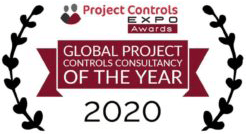With over 25 years of working in Planning, Project Controls, and PMO environments, I have heard many Companies claim to use the Last Planner ® Methodology [1], but very few do. Challenge them to explain it, and even fewer can.
Last Planner® is the combination of utilising the “Rolling Wave” scheduling methodology, along with Stakeholder [2] input, buy-in and acceptance, whereby tasks or activities in the upcoming reporting period, or two periods, are broken down into a lower level of detail to provide guidance to the workforce, foremen, supervisors etc. completing the tasks.
What is the problem?
Many of the construction projects that I have worked on have had project schedules / plans which are held at a management level, and not regularly shared with site operatives. More significantly, site operatives are rarely asked to provide input into the development of Project Schedules. This can lead to the operatives, site managers, foremen etc. all having their own working schedule for what is planned over the next week or 2, and these are used to plan the need for material, labour etc. In this scenario, the risk of clashes between services, scope, resources and material increase, along with a risk that the schedule which is reported against is unrealistic and unachievable from the start. Forecasting costs also becomes challenging.
How can we implement the Last Planner methodology?
The key items to get Last Planner® operating smoothly on your project are:
- Communication
- Involvement
- Ownership
- Collaboration
It is also important to note that Last Planner® does not work alone and has a large role to play in Lean Management.
When do we use Last Planner?
The simple answer to this question is: As soon as possible.
Why user Last Planner?
Last Planner® is a Lean method to help save time, cost and effort, by focusing on the short-term tasks in detail, while still maintaining an overview of the entire project lifecycle. Questions that the correct implementation of Last Planner® can provide answers to are:
- Did the correct activities progress as planned? This will show activities that did not progress as planned, and others that progressed but were not planned (aka out of sequence).
- Has everything been prepared for upcoming tasks? Weekly reviews and look-ahead schedules will provide information of what is planned, making preparation simpler, ensuring the right people, plant and materials are at the right place at the right time.
- How many tasks are planned for the upcoming week or two? This will help to identify if a schedule is entering a more active phase by reviewing the number of upcoming activities.
Two main challenges of implementing successful Last Planner® are:
- Achieving an Accepted Schedule under an NEC3 contract: Many contracts require schedules to have activities of 20d duration or less, which goes against the Lean and Last Planner® methodologies. In order to mitigate this, early collaborative working between all parties to agree to utilise the Last Planner® methodology and benefit all, whilst still ensuring the schedule meets all the standard NEC3 requirements such as Key Dates and the “Order & timing of all of the operations that the Contractor intends to carry out”.
- Changes to the schedule using the “Rolling Wave” methodology: Under the NEC contracts, and in the spirit of collaboration, schedule development is permitted and should be clearly identified, if the change is not related to a change in scope, cost, time or risk that has not been through the Early Warning / PMI process.
An example of the Last Planner methodology
In Figure 1 below, there is repeating scope for Area 1 and Area 2, with them happening in sequence. As you can see, the activities for Week 1, 2 and 3 are at a detailed level, whereas the activities from Week 4 onwards are at a higher level of detail. Cost and resource loading are the same across both sets of “Foundation” activities. In Figure 2, work has progressed, and additional detail has been added to the schedule for Area 2 Foundation works. The overall duration has remained the same, the original activity “A1090” has been changed to a “Level of Effort” for the detailed activities, and the original Budgeted Total Cost, and Resource allocations have been split between the new detailed activities accordingly.
Conclusion
The keys to implementing Last Planner® and Lean methodologies are communication, involvement, ownership and collaboration, and when implemented correctly, can save time, money and resources, while still providing all of necessary information required from a Project Controls perspective.
[1] The term Last Planner® is a registered trademark of the Lean Construction Institute
[2] Stakeholders in the Last Planner® process are the people or teams who are responsible for performing the task or activity planned, up to and including the end client / user of the product.
If you’d like to know more about how to successfully implement the Last Planner® methodology on your Project / Portfolio, why not get in touch
You can email us at info@logikalprojects.com
or call on +44 (0)20 7404 4826 (UK & Europe) or +61 1300 564 452 (APAC)
Or you can use the Contact Us form here.








